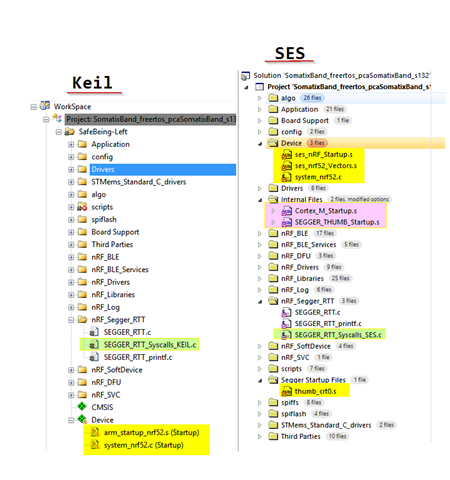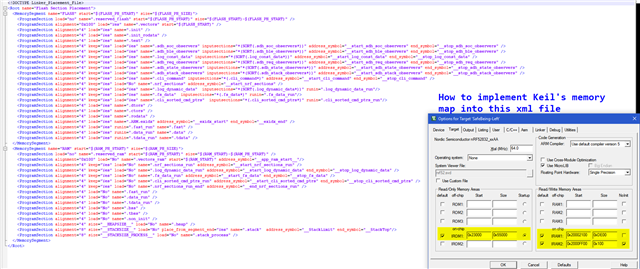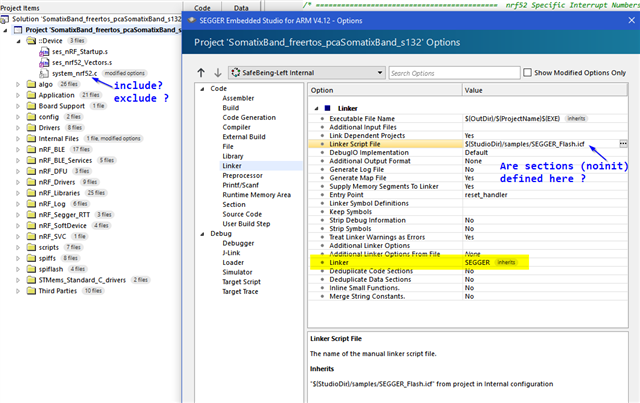Hi,
I have a pretty extensive nRF52832, SDK14.2, freertos project built and debugged using Keil MDK.
I'm trying to port this project to SES and experience some problems.
This is what I did -
- I've used SES import wizard to import the Keil project file *.uvproj
- Opened a clean HRS_freertos SES session
- Based on the clean HRS_freertos example structure started to modify my project's settings:
- Replaced Keil's imported \Device startup file with the equivalent (?) set of files taken from the clean example (yellow) -
from Keil: Device\system_nrf52.c + arm_startup_nrf52.s -->
to SES: Device\ses_nrf52_startup.s + ses_nrf52_vectors.s + system_nrf52.c & SeggerStartupFIles\thumb_crt0.s - Replaced RTT file (green):
from Keil: nrf_Segger_RTT\SEGGER_RTT_Syscalls_Keil.c -->
to SES: nrf_Segger_RTT\SEGGER_RTT_Syscalls_SES.c - Noted the 'Internal files' folder added to SES by the import wizard (pink)

- Replaced Keil's imported \Device startup file with the equivalent (?) set of files taken from the clean example (yellow) -
- However, I can't find the following:
- Setting the memory map correctly.
- The 'Linker > Section placement file' option does not show in the imported project (it does show in the clean sample project)
- Even when looking at the clean example 'flash_placement.xml' I don't see how to convert the original memory map


- The 'Linker > Section placement file' option does not show in the imported project (it does show in the clean sample project)
- Setting the memory map correctly.
Last, but not least, I've tried to post this thread into Segger's SES forum however I can't find a 'new post' link/button.
Is it just me ???
Thanks


